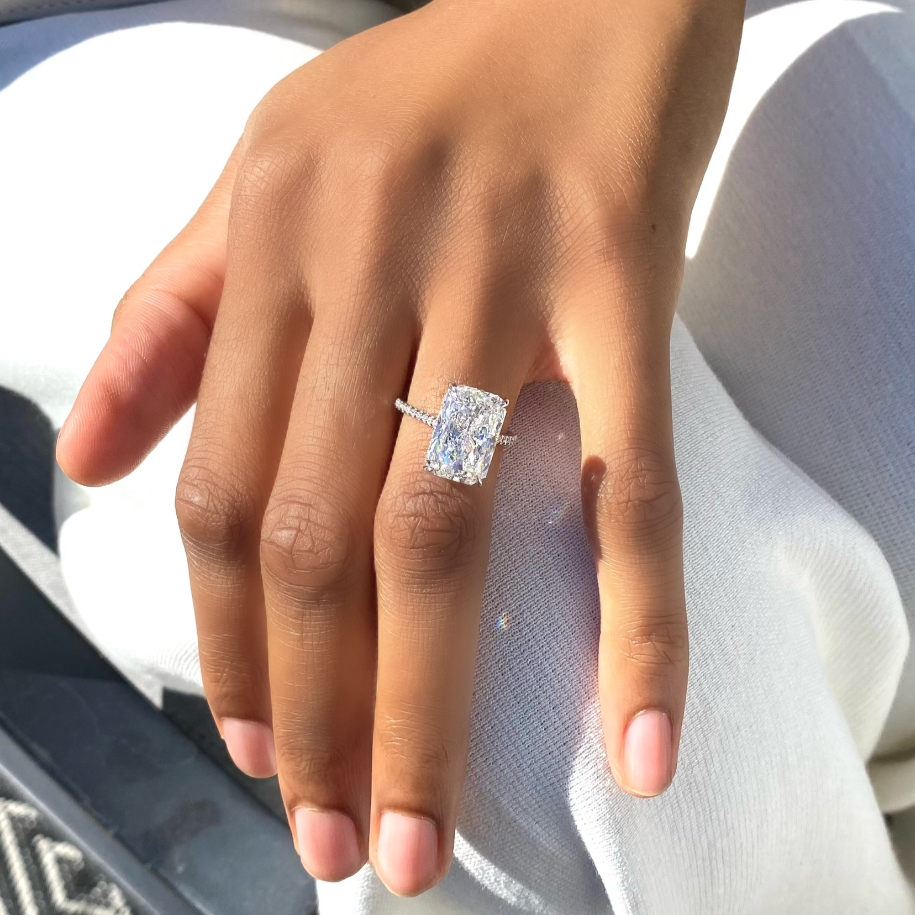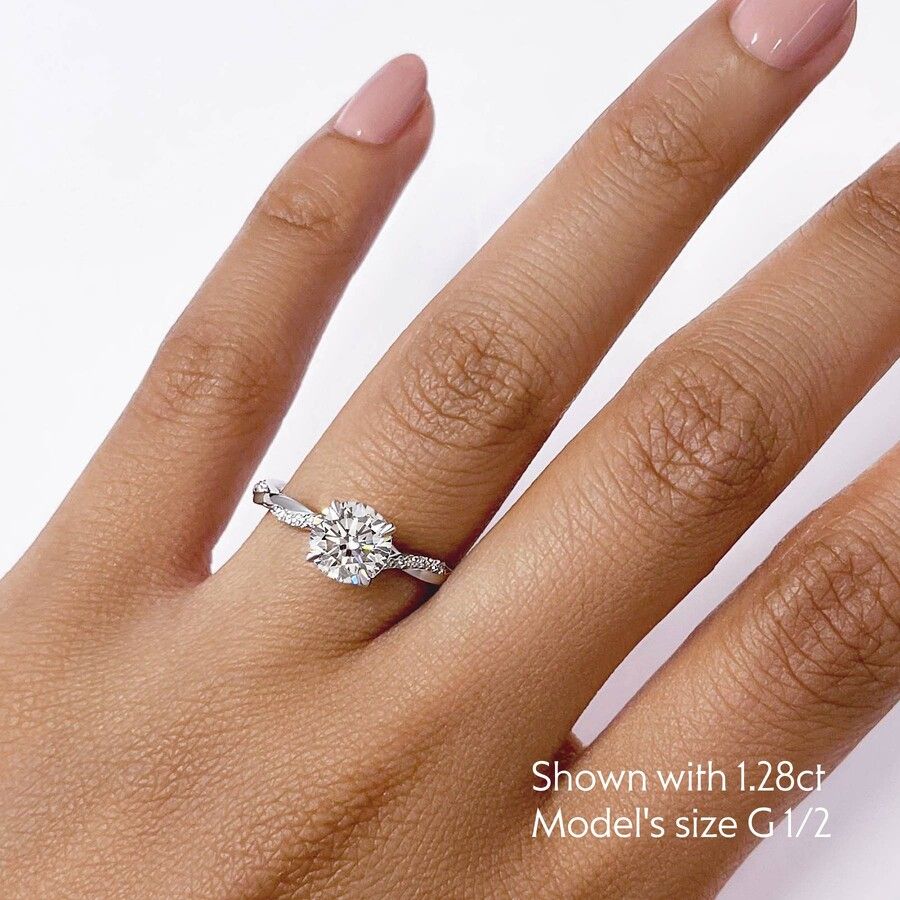Are lab grown diamond engagement rings More Durable Than Natural Diamonds?
Wiki Article
Why Lab Grown Diamond Interaction Rings Are the Perfect Choice for Eco-Conscious Couples
Lab-grown Diamond engagement rings present an engaging option for couples who prioritize sustainability. These rubies use a striking alternative to conventional extracted rocks, considerably reducing ecological damage. They are developed using sophisticated techniques that assure both quality and brilliance. As recognition of moral sourcing expands, lots of couples are reevaluating their choices. What ramifications does this shift have for the future of the Diamond sector?

The Environmental Influence of Standard Diamond Mining
Although Diamond mining has long been celebrated for its appeal and prestige, the ecological repercussions of traditional mining methods are increasingly concerning. The extraction of diamonds usually includes considerable land interruption, leading to logging and environment loss for plenty of varieties. In addition, the procedure consumes huge quantities of water, which can diminish local sources and detrimentally influence bordering neighborhoods. Toxic chemicals used in mining operations can infect neighboring water sources, better threatening both human populations and wildlife.Furthermore, the carbon footprint connected with transferring extracted rubies contributes to the total environmental toll. The hefty machinery and equipment needed for mining procedures add substantially to greenhouse gas emissions. As understanding of these concerns expands, lots of customers are beginning to wonder about the sustainability of traditional Diamond sourcing. This shift in viewpoint highlights the urgent requirement for even more eco-friendly alternatives, such as lab-grown diamonds, which promise to lower the ecological impact while preserving the beauty and worth of Diamond precious jewelry.
The Process of Developing Lab-Grown Diamonds
Lab-grown diamonds are created with two primary techniques: High Pressure High Temperature (HPHT) and Chemical Vapor Deposition (CVD) The HPHT process resembles the natural conditions under which diamonds create in the Earth's mantle. It involves subjecting carbon to extreme pressure and temperature level, causing the formation of carbon atoms right into Diamond frameworks. On the other hand, the CVD method permits the growth of diamonds in a controlled environment. This strategy utilizes a gas mix including carbon, which is stimulated to create plasma, enabling carbon atoms to down payment onto a substratum and expand layer by layer into Diamond crystals.Both techniques produce diamonds that are chemically and literally identical to natural rubies - lab grown diamond engagement rings. The option of method commonly depends upon the desired characteristics and size of the final gem. This innovative strategy to Diamond development not just uses a sustainable choice however likewise permits for higher transparency in the sourcing of materials
Quality and Sparkle of Lab-Grown Diamonds
While many might assume that lab-grown diamonds vary in quality from their natural counterparts, they really show equivalent brilliance and aesthetic appeal. Lab-grown rubies are created making use of sophisticated modern technology that replicates the natural problems under which rubies create, causing stones that possess identical physical and chemical residential or commercial properties. These rubies accomplish the very same remarkable clearness and color grading as extracted diamonds, making them indistinguishable to the naked eye.In terms of radiance, lab-grown diamonds often present premium light performance because of their precision-cut facets. The rigorous quality assurance during production guarantees that these rubies fulfill high standards, improving their visual attraction. Furthermore, they are offered in a range of dimensions and forms, permitting pairs to discover the best ring to match their personal design. Ultimately, lab-grown rubies offer a beautiful combination of elegance and quality, making them an enticing selection for interaction rings.
Moral Considerations in the Diamond Sector
As customers become significantly conscious of the ethical ramifications surrounding Diamond sourcing, the conversation around the Diamond market has actually changed significantly. Concerns regarding dispute diamonds, typically described as "blood diamonds," have triggered require greater transparency and accountability in mining methods. These rubies are extracted in battle zones and offered to fund armed conflict, increasing significant moral inquiries for his comment is here customers. In addition, the environmental impact of conventional Diamond mining has come under examination, with concerns such as habitat destruction and water contamination often highlighted.In action, many have turned to lab-grown rubies as a much more moral alternative. These stones are developed in regulated atmospheres, eliminating the dangers connected with mining. Lab-grown diamonds appeal to customers looking for to make responsible selections that align with their values. The expanding need for ethical methods continues to improve the Diamond market, pushing for lasting and gentle sourcing techniques.
Cost-Effectiveness of Lab-Grown Diamonds
Lab-grown rubies use a compelling alternative for consumers seeking affordable interaction rings - lab grown diamond engagement rings. Valued significantly reduced than their natural equivalents, they give exceptional value for money without compromising high quality or look. This cost makes lab-grown rubies an appealing alternative for budget-conscious couplesReduced Price Point
Many pairs are finding that choosing lab-grown Diamond interaction rings can substantially decrease their total costs without giving up top quality or beauty. These diamonds generally cost 30% to 50% much less than their mined equivalents, making them an appealing option for budget-conscious consumers. The price benefit emerges from lower production costs and a much more efficient supply chain, which eliminates the costs connected with mining. Consequently, couples can purchase larger stones or even more intricate settings, improving the general visual of their rings. This affordability not just allows for a much more personalized choice yet also lines up with the worths of eco-conscious couples who focus on sustainability while remaining financially savvy. Lab-grown rubies offer an ideal mix of style and visite site economy.Worth for Cash
The cost-effectiveness of lab-grown diamonds extends beyond their preliminary cost, providing exceptional worth for cash. Unlike all-natural rubies, lab-grown options can be approximately 40% cheaper while keeping the exact same physical and chemical homes. This cost permits couples to spend in bigger or higher-quality rocks without exceeding their budgets. The resale worth of lab-grown rubies is slowly improving, making them an extra practical option for future monetary considerations. Furthermore, lab-grown rubies commonly feature lower ethical and environmental prices, supplying couples with satisfaction. By picking lab-grown diamonds, eco-conscious couples not only conserve money however also add to lasting methods, improving their overall value proposition in the precious jewelry market.
Customization Options for Lab-Grown Involvement Rings
Just how can couples assure their interaction ring shows their distinct love story? Customization options for lab-grown Diamond engagement rings provide a suitable service. Couples can pick from various Diamond shapes, including round, princess, or oval, enabling them to choose a design that reverberates with their individual aesthetic.Additionally, they can pick the setting-- be it solitaire, halo, or vintage-inspired-- ensuring the ring matches the Diamond's brilliance. Metal choices, such as white gold, yellow gold, or climbed gold, further improve personalization, catering to specific tastes.
Additionally, pairs can incorporate purposeful inscriptions, including an emotional touch that symbolizes their bond. With these considerable modification options, lab-grown Diamond interaction rings not just symbolize a pair's love yet also mirror their values, making them an ideal option for eco-conscious partnerships. Inevitably, these rings come to be a true representation of their special journey with each other.
Frequently Asked Questions
How Do Lab-Grown Diamonds Contrast to All-natural Diamonds in Value?
Lab-grown rubies generally set you back 20-40% less than all-natural diamonds, providing similar top quality and appearance. Their reduced rate point makes them an attractive choice, particularly for budget-conscious customers seeking moral and lasting options in jewelry.
Are Lab-Grown Diamonds More Sturdy Than Natural Diamonds?
Lab-grown rubies have the same physical and chemical homes as natural diamonds, including resilience. Both kinds score a perfect 10 on the Mohs scale, making certain that lab-grown diamonds are equally immune to scratching and damage.Can Lab-Grown Diamonds Be Resold Quickly?
Lab-grown diamonds can be re-selled, but their market demand varies compared to natural rubies. While some customers value their honest origins, others may prefer natural alternatives, potentially affecting resale worth and simplicity of purchase.What Are the Treatment Recommendations for Lab-Grown Diamonds?
visite site Lab-grown diamonds call for regular like preserve their brilliance. Cleaning with mild soap and cozy water, utilizing a soft brush, and preventing severe chemicals will assist protect their glimmer and honesty for years to come.Are There Any Certifications for Lab-Grown Diamonds?
Lab-grown rubies can be certified by reliable companies such as the Gemological Institute of America (GIA) and the International Gemological Institute (IGI) These certifications assure adherence, high quality, and authenticity to industry requirements for lab-created gems.Both techniques generate diamonds that are chemically and literally the same to all-natural diamonds. Lab-grown diamonds are created making use of advanced technology that duplicates the all-natural conditions under which rubies develop, resulting in stones that possess similar physical and chemical residential or commercial properties. Lab-grown rubies normally set you back 20-40% less than natural diamonds, using similar high quality and appearance. Lab-grown rubies have the same physical and chemical residential or commercial properties as natural diamonds, consisting of durability. Lab-grown rubies can be marketed, but their market demand differs contrasted to natural rubies.
Report this wiki page